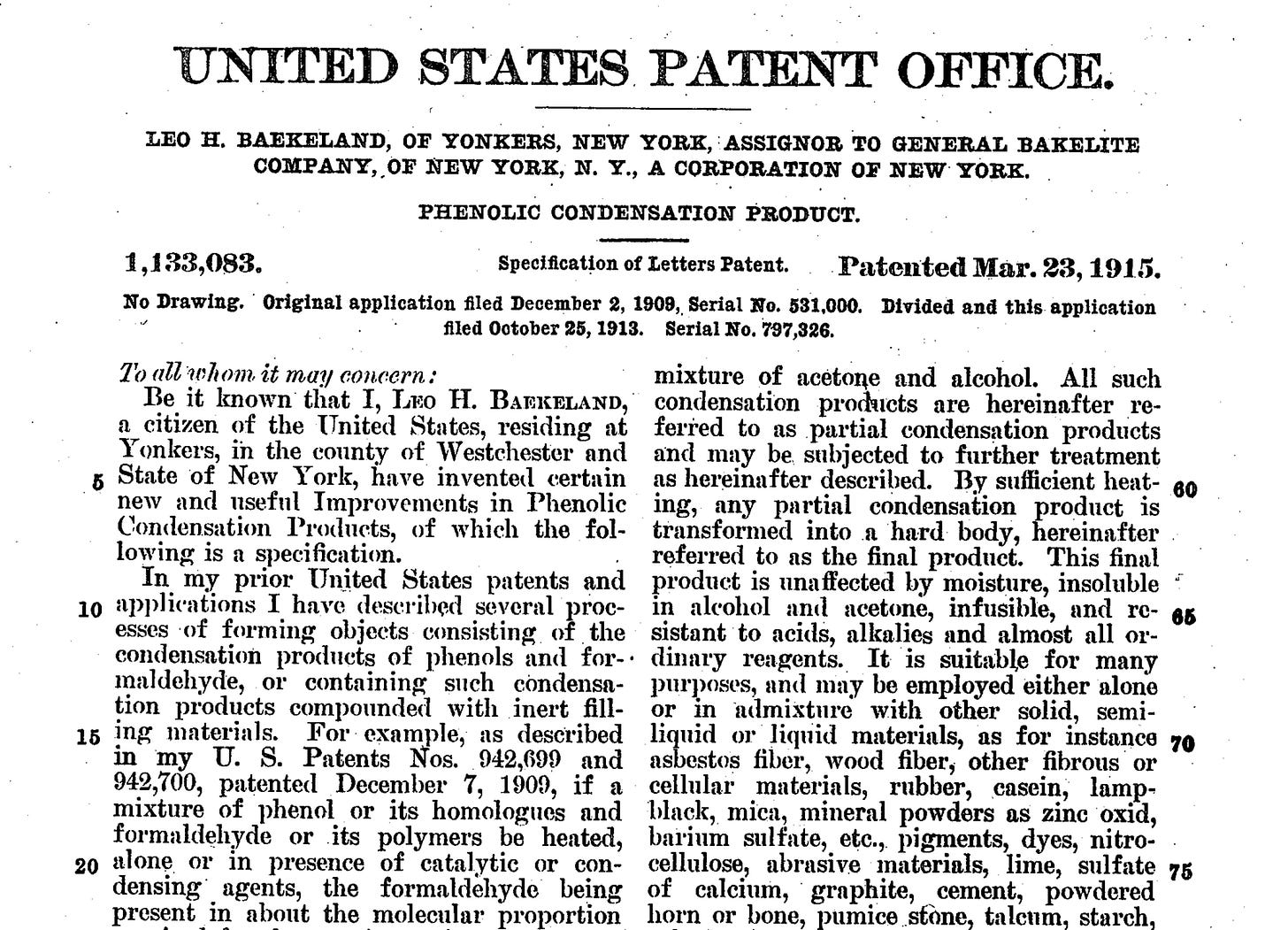Alike synthetic biology, synthetic chemistry was born as a response to a shortage in the supply of sought-after goods, starting with ivory for billiard balls in the late 19th century. As the electrical industry expanded in the early 20th century, Leo Baekeland invented bakelite, the first truly synthetic polymer made through the controlled reaction of phenol and formaldehyde to replace bug-derived shellac as an electrical insulator.
Easily moldable, highly durable, and cost-effective, bakelite soon remade everything from cars to phones, washing machines, irons, and combs. Together with other new materials like nylon and teflon that had properties not found in nature, they made a statement: Synthetic materials have an identity of their own. You can rearrange atoms in new, imaginative ways. It’s not about emulating nature, but transcending it.
It took less than a decade since World War II for plastics to be massively embedded in everyday life, mostly without questioning whether “the good old natural we used to know was actually better”. After the war’s significant R&D push for synthetic materials, the rise of the American middle class and women’s rights, advertising for plastics companies was clear: new, more practical and cheaper materials for everything and for all.
So far with biology the vibes have felt like “Take that protein, put it in bacteria and grow it in a tank”, copy-paste-grow(-optimize). We are living in a time when culture is influencing our biotech ideas more than biotech is influencing culture. Our constrains are not merely technological but also cultural.
As plastics have now polluted our oceans and our bodies, we have entered a parallel universe where “synthetic” equals bad and “natural” equals good, especially in materials, food, and agriculture. Despite being so, most consumer biotech goods are not being branded as synthetic and “non-GMO” labels are the gold standard consumers trust.
Interestingly, the anti-synbio mentality doesn’t always seem to impact health products as much. We want to move away from chemically-synthesized drugs, we want more information about our bodies, and are willing to try out the bunch of new consumer GM probiotics.
That is because the new natural is human centric. Even when it comes to ecological consumer products, sustainability alone is not enough as a value proposition. I think we can use the new natural as a marketing and design north star to sell biobased products that not only copy-paste nature but transcend it like bakelite once did. Examples in hyperlinks.
This marks my final piece of fuzzy dreams at the intersection of culture and biotech. From now on, I aim to evangelize the new natural to curious non-scientists through stories of how specific biotech products work. Wish me luck!










I share your conviction that society embracing bio is a future we should aim for, and your thoughts and articulation on ways in which we can guide society toward that future are inspiring. Find myself nodding to the ends of your paragraphs. Keep going!!
I enjoyed this piece, Sofia! It reminded me of the grad school application essay I wrote for the Materials Science program, trying to convince the Department Head who had worked on synthetic polymers his whole life that biological materials ARE the way of the future. I look forward to reading your future stories!